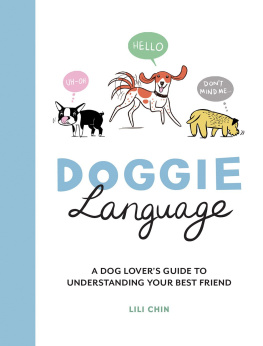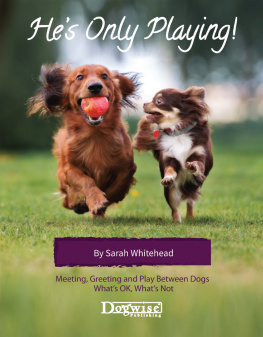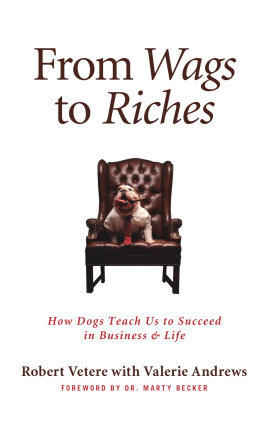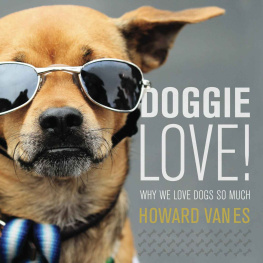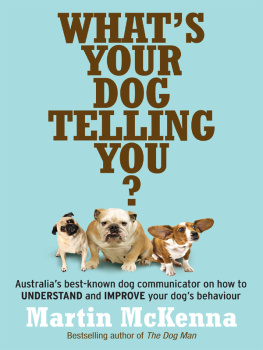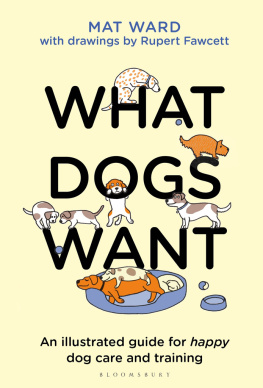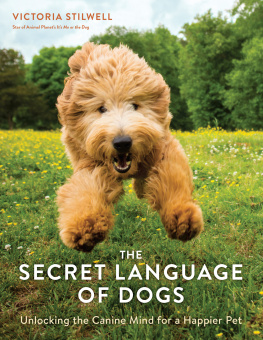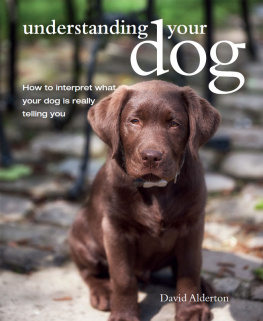DOGGIE LANGUAGE
Copyright Lili Chin, 2020
Illustrations by Lili Chin
All rights reserved.
No part of this book may be reproduced by any means, nor transmitted, nor translated into a machine language, without the written permission of the publishers.
Lili Chin has asserted her right to be identified as the author of this work in accordance with sections 77 and 78 of the Copyright, Designs and Patents Act 1988.
Condition of Sale
This book is sold subject to the condition that it shall not, by way of trade or otherwise, be lent, resold, hired out or otherwise circulated in any form of binding or cover other than that in which it is published and without a similar condition including this condition being imposed on the subsequent purchaser.
An Hachette UK Company
www.hachette.co.uk
Summersdale Publishers Ltd
Part of Octopus Publishing Group Limited
Carmelite House
50 Victoria Embankment
LONDON
EC4Y 0DZ
UK
www.summersdale.com
eISBN: 978-1-78783-946-5
Substantial discounts on bulk quantities of Summersdale books are available to corporations, professional associations and other organizations. For details contact general enquiries: telephone: +44 (0) 1243 771107 or email: enquiries@summersdale.com.
This book is dedicated to Boogie, my teacher and muse.
WELCOME, DOG LOVERS!
Many years ago, I was watching a video of myself training my dog, Boogie. I had seen this video several times before, but this time I noticed Boogie yawn and lick his lip after I tugged on his collar. In my earlier viewings, I was so focused on how well Boogie was responding to "Sit" that I had completely missed these signals.
Having just read Turid Rugaas' On Talking Terms With Dogs, this time I noticed and understood that the "yawn" and "lip lick" were signs of discomfort, and that these were Boogie's responses to the collar pressure on his neck. This was a mind-blowing realization for me, and from then on, I could never unsee these signals again.
I was determined to learn more about dog body language to become a better human to my dog. Amazed that this information wasn't better known in popular culture, I used my illustrations to share what I was learning with other dog lovers.
Over the past decade of my career, I have had the privilege of creating dog body language images for many dog-training professionals and welfare groups. My illustrations have appeared in "dog-bite prevention" campaigns, training books and museum exhibitions. My Doggie Language poster has been translated into many languages and used by rescues and shelters around the world. The important shared message: by learning dog body language, we can become more responsible guardians and caregivers. We can avoid causing harm to our companion animals and know when they need help.
Science confirms that dogs are thinking, feeling, social individuals. Like humans, dogs feel fear, anger, happiness, sadness and surprise. They have likes and dislikes. They can feel confused or conflicted, and when they socialize, they do their best to maintain the peace and avoid conflict. Just like us.
Humans differ from dogs in that we like to communicate with physical touch (hugging, shaking hands) and making direct eye contact. What might surprise many people is that dogs are communicating visually all the time. They do not need to bark or physically touch to let each other and us know what they dislike, what they are comfortable with and what they absolutely enjoy.
When a dog tells us something is too intense for them (too close, too loud, too direct, too much movement or too weird) we may unintentionally make the situation worse if we misread their body language and add to their stress. A dog who growls, bites or starts a fight usually does so as a last resort when all their smaller communication signals have had no effect.
Thankfully, the times they are a-changin', and dog lovers around the world are becoming more knowledgeable about dog body language, and how to be more empathic listeners and communicators. I hope this book will contribute to that self-education. When we stop bossing our dogs around and instead show them that we see and respect their signals the way that polite and friendly dogs do we create a dialogue that dogs really like!
It is hard to put all the nuances of a dog's body language into words, so the drawings in this book are designed to help you know what to look for, and to make distinctions between similar expressions. As you compare drawings, you will see key differences that give you a context to take into consideration. For example, a panting mouth that looks like it is "smiling" may in fact signal anxiety if you also notice the big pupils, wrinkled forehead, pinned-back ears and "spatula tongue".
Even if your dog doesn't look like any of the dogs I have drawn (there are, after all, over 400 different dog breeds and physical types in the world), the drawings should still help you recognize these signals in your own dog.
I truly believe that the more we understand what we are seeing, the more we will learn to see, and the more we practise observing and "listening" to our best friends, the better we will be able to help them feel safe, confident and happy.
REMEMBER:
Look at the whole body
Always look at the dog's whole body in addition to single body parts. What does the dog's overall posture and movement look like?
Feelings are contextual
While a dog's body language tells us what they are feeling, we don't have the full picture without considering the context. What is going on? How is the dog's body language changing in relation to what is happening?
Every dog is an individual
A dog's expressiveness is also dependent on their age, health, breed, physical type and unique past experiences. A puppy's communication style will be different from that of an adult dog. It is normal for different dogs to respond differently to the same situation.
CONTENTS
GREETINGS
How a dog might respond to a friend old or new.
GREETING STRETCH
Visual signs:
- Slow stretch, on the ground or up onto a person
- Soft eyes, soft ears

